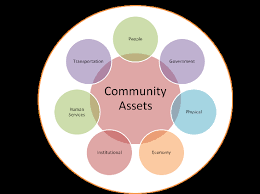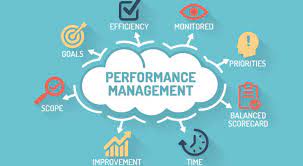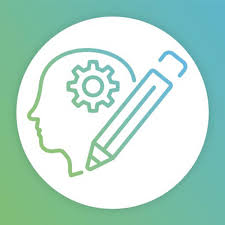Want help to write your Essay or Assignments? Click here
Advanced Practice Roles in Nursing
Introduction
Nursing is pragmatically considered to be a profession that is within the Medicare division of the overall concern of diverse families, individuals and the communities so the communities can achieve, sustain or even improve their finest health and the eminence life. Nursing can be distinguished from diverse further Medicare providers because of their aspect of work, their work technique to patient’s care, guidance and the extent of performance as the nurses usually carry out work in a broad range of performance areas that has diverse scope of performance and an intensity of the prescribed influence in every practitioner.
Nursing can be said to be a promotion, safety, and even the optimization of abilities and health, impediment of the illness and improvement of pain by the analysis and the treatment of human reaction.
Purposes of nursing
Nursing as a worldwide community is normally for its professional to ensure that there is quality care for everybody as they maintain their diverse credentials, standards, code of ethics a competencies. For an individual to work in the nursing as a professional, all the nurse or the nurses practitioners holds one or even more credentials that normally depends on their scope of practice and their education.
Nurses are usually considered as not truly doctor’s assistants because nurses more often are independently caring for their patients or even assisting other nurses in the healthcare centre. Registered Nurses are mandated to treat patients, provide emotional support, record their medical history, and even provide follow-up care because nurses assist doctors in performing some of the diagnostic tests.
Want help to write your Essay or Assignments? Click here
Advanced Practice Roles in Nursing
Roles of the Nurse Practitioner, nurse educator, nurse informatics, and nurse administrator in advanced practice nursing
Nurse educators
Nurse educators are registered nurses who have advanced education that includes advanced clinical training in a health care specialty because they combine expertise and also a passion for teaching into rich and rewarding careers selection. Nurse educators normally plays a paramount role in the aspect of strengthening the overall nursing workforce who serves as a role models in providing needed leadership skill so as to implement evidence based practice.
The nurse educators are similar with nurse practitioners in the aspect of health care provision but majorly differ in their work place because a nurse practitioner is in the health care room while a nurse educator can work from school to school so as to educate diverse people on the importance of nursing as a profession.
Nurse informaticians
Nursing Informatics is considered to be a discipline and practice that incorporates the aspect of nursing, its data and diverse awareness, with the diverse administration of data and the communication skills so as to uphold the fitness of communities. A nurse informatics usually work as developers of information and communication technologies, researchers, the principal information and nursing officers and also as software engineers who advance the healthcare facilities.
Center area of work for nurse informaticians includes the perception illustration and standards so as to sustain the evidence-based performance, education, and research. The nurse informaticians are similar with other advanced roles of nursing in the aspect of health care provision and health care improvement but majorly differ in their work place because a nurse informaticians is in the health care control room such as data centre so as to ensure that sophisticated deices and softwares are installed in the health care for improved efficiency.
Advanced Practice Roles in Nursing
Want help to write your Essay or Assignments? Click here
Nurse administrator
Nurse administrator is an advanced role in nursing professional who are knowledgeable of the aspect of guidance practices as they have relation to the nursing professionals. This particular aspect may refer to a number of managerial supervisory and diverse tittles that assist the health care facilities in carrying on their esteemed functions. The multifaceted and complex character of contemporary healthcare facilities needs nursing guidance professionals who can craft efficient facility-wide systems and intra-departmental of healthcare delivery as they lead to a useful and proficient employees.
Nurse administrator permits for best possible patient care in any health care environment, from private hospices and hospitals to big medical care centers. Nurse administrator is similar to other advanced roles of nursing professionals in that all of the foster the aspect of healthy environment and the general provision of efficient health care services. Conversely, nurse administrator differ with other advanced roles of nursing profession in that they ensure that all the roles are efficient so as to provide a unity and productive workforce.
Selected Advanced Practice Role
Nurse Practitioner
Nurse practitioner is a sophisticated practice of registered nurses who are usually knowledgeable and vigorously skilled so as to offer health support and diverse protection by the aspect of medical analysis and the handling of severe illness and the persistent conditions (Hamric, 2013). A nurse practitioner normally has maximum capability to provide health care to all people even those who are perceived mental challenge because of their scope of work and advanced training.
Nurse practitioner differs with other advanced roles of nursing because nurses are mandated to carry out his or her duties in the health care room such as recording data and diverse healthcare services to the patients. A nurse practitioner is similar to other advanced roles of nursing as all of them involve the service that will prevent illness and promote health (Speziale, 2011).
Advanced Practice Roles in Nursing
Want help to write your Essay or Assignments? Click here
Nurse Practitioners regulatory and legal requirements for North Carolina
Nurse Practitioners are considered to be the principal group of highly skilled practice and roles in North Carolina State. The licensure law and state practice usually provide for all the nurse practitioners to assess all the sick people, order, analyze, and then interpret the diagnostic tests with physician supervision so as to instigate and then manage treatments that incorporate recommending medications in the special licensure power of the state panel of nursing (Munhall, 2012).
The supervision physician should provide written instructions that orders medication, tests and the treatment which in turns assesses the information of Nurse Practitioners within a logical time. In North Carolina Nurses are normally taken care by a Joint Subcommittee of the North Carolina Medical Boards and the North Carolina Board of Nursing who promulgates rules so as to control the work of nurse practitioners, that then should be accepted by both panels prior to finishing the rulemaking procedure and then becoming effectual.
North Carolina Organization of Nurse Leaders (NCONL) usually exists to promote the nursing management excellence, shape general population guidelines and also toughen the leaders in nursing profession through teamwork and learning (Speziale, 2011). To become a member of the North Carolina Organization of Nurse Leaders, one is supposed to fill out the membership application that can be downloaded from the website. Membership fees dues are normally paid after January 1st is usually prorated on a quarterly basis because prorated membership dues are commonly considered only after a 12-month lapse in membership.
Advanced Practice Roles in Nursing
Want help to write your Essay or Assignments? Click here
Required competencies for North Carolina
In North Carolina, nurse practitioners are normally required to possess high level of education so as to provide great nursing services to the public at large (DeNisco, 2012). Diverse exams are conducted so as to determine the level of competence that an individual contain. Nursing profession is considered to be a profession that needs adequate and necessary skills and knowledge because of its nature and the aspect that the profession deals with life-saving matters.
The required competencies for a nurse practitioner include pass in a nursing exams with high grades as the profession usually offers for all the nurse practitioners to assess all the patients, order, analyze, and then understand the diagnostic assessments with physician supervision so as to instigate and administer treatments that incorporates recommending prescriptions in the special licensure power of the state panel of nurses (Panel, 2011).
Some of the organizations are deemed best in working as I plan to work in North Carolina State Hospital because I feel that the medical facility environment possesses exceptional characteristics that support nursing profession. The state has a lot of people because the profession needs large population so as to embrace efficiency and experiences.
Advanced Practice Roles in Nursing
Want help to write your Essay or Assignments? Click here
Health Policy and the Advanced Practice Roles in Nursing
Early childhood experience shapes health and the aspect of well being throughout the life
Early childhood social and economic conditions are considered to directly affect their respective health conditions. Diverse education and income, their neighbors resources and economic and the social factors affects their health at each stage of their life but the impacts on the young children is usually dramatic. Hamric et al (2013), the children early ages have the full potential to set up a path they are leading towards a good health or far away.
The diverse impact of these obstacles and opportunities along with diverse health effects that are accumulated over a long period of time can be transmitted in across generations as the children grow up to become parents because some of the social disadvantage in childhood such as a chronic stress can lead to a health disadvantage in adulthood. The effects of these is that, every parent want the best for all their children but it is usually considered that not all the parents have the same resources so as to assist their young ones to grow up healthy.
The policy needs to change the aspect of health care provision in that all the parents should try having the best practice and education for their children. Children should receive good education earlier so that they can embrace their good health from diverse school education that enhances good health. According to Robert Wood Jonson Foundation, nurse practitioners need diverse health policy attributes that will assist him or her ensure that the policies are helpful because as the number of negative childhood experiences increases it also increases the aspect of negative health outcome.
Advanced Practice Roles in Nursing
Want help to write your Essay or Assignments? Click here
The process required to make the changes in the health policy should be instrumental so as to embrace productivity as a nurse practitioners have the capability to conduct numerous campaigns so as to preach the good parts of early childhood experience as it shapes health and the aspect of well being throughout the life of a child. According to Robert Wood Jonson Foundation, interested parties are normally the health practitioners, government and parents who have the responsibility to ensure that the children have a positive environment that will assist them shape the livelihood of their children.
Nurse practitioners need to be very intelligent in what they are doing so as to reveal any confidential matter that concerns a patient (Hamric, 2013). What I could that may lead the efforts to influence the change in policy is conducting numerous training so as to promote and ensure that the children have a positive environment that will assist them shape the livelihood of their children. I will attain and evaluate those missing attributes by continuous practice because this is considered to be the best way to add knowledge for a nurse practitioner.
Prediction of the effects on healthcare quality if the change is implemented
If the particular changes are implemented, children will have a better life when the attain an adulthood age because of the aspect that they have been shaped because nurse practitioners have diverse responsibilities to ensure that the children have a positive environment that will assist them shape the livelihood.
Advanced Practice Roles in Nursing
Want help to write your Essay or Assignments? Click here
Conclusions
According to Robert Wood Jonson Foundation, nursing is considered to be one of the professions that promotes, protects, protection of the poor health and injuries, assistance of healing, and lessening of the affliction by the analysis and management of human reaction (Parahoo, 2014). Nurse practitioners use their leadership attributes to ensure that the nursing profession continues providing quality services to the whole world because nurse practitioners normally have maximum capability to provide health care to all people even those who are perceived mental challenge because of their scope of work and advanced training.
References
DeNisco, S. M. (2012). Advanced practice nursing: Evolving roles for the transformation of the profession. .
Hamric, A. B. (2013). Advanced practice nursing: An integrative approach. . Elsevier Health Sciences.
Munhall, P. (2012). Nursing research. .
Panel, I. E. (2011). Core competencies for interprofessional collaborative practice: Report of an expert panel.
Parahoo, K. (2014). Nursing research: principles, process and issues.
Speziale, H. S. (2011). Qualitative research in nursing: Advancing the humanistic imperative.
Want help to write your Essay or Assignments? Click here









